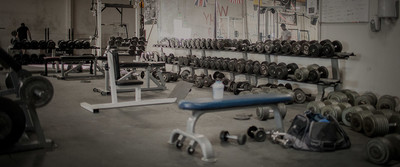If you've been researching the best methods to torch fat quickly, there's no question that you've come across something called high intensity interval training. Simply put, HIIT is the preferred method of most trainers right now to get their clients down to a very lean state of body fat.
Touted for it's metabolic benefits and for allowing you to get in and out of the gym in record time, people everywhere are pushing the intensity barrier and giving this workout protocol a go. But, is HIIT all that it's cracked up to be? After all, it isn't exactly a walk in the park. If you've ever done HIIT yourself, you realize that this type of training is going to take it out of you in a major, major way. In fact, you may feel pretty much like all the life has been kicked right out of you and all you want to do is lie on the floor in the fetal position while your body attempts recovery.
There's no way around the fact that high intensity interval training is one of the most demanding workouts around.
Is it worth the pain?
The truth is that there are a number of situations in which HIIT may actually not be the best of ideas. By taking this into account you can get a better idea of whether this highly talked about cardio is a smart move with your current workout set-up.
Let's look at a few of the main factors that you must consider.
 Your Current Diet Plan
Your Current Diet Plan 
The very first thing to look at with regards to whether you should be doing HIIT is the type of diet plan you're on. If you're someone who hasn't seen a slice of bread—or any other carbohydrate for that matter for at least a few weeks, attempting to do HIIT is going to be downright disastrous. Not only are you going to set yourself up for the loss of lean muscle mass, but chances are you won't make it through the workout.
You simply cannot workout at the intensity required by HIIT without glucose in your system and if you don't have carbohydrates in the diet to any extent you will not have the resources to complete the session.
Even if you're not on a completely carb devoid diet, if they're just moderately reduced you still have to be careful because if the calories are still very low, you're going to run into problems.
Remember, as much as you want to exercise that fat off your body, you really are limited by the fuel you are feeding yourself. Just like you couldn't drive a car without putting gas in the engine, you aren't going to get very far with your workouts without the desired source of fuel.
Performing HIIT without any glucose present would be like filling up your gas tank with Pepsi and trying to go. It just isn't going to happen.
 Your Weight Workout Volume and Intensity
Your Weight Workout Volume and Intensity 
Second, you must consider when deciding if HIIT is a wise decision for you what your weight workouts look like. One huge mistake that people make time and time again is going into the gym and doing four very heavy, high volume weight lifting workouts and then trying to add two more sessions of HIIT cardio on their off days as well as another two sessions timed later on in the day after their upper body workouts.
That right there is a recipe for CNS destruction. Your central nervous system can only take so much intensity and once you surpass what it can handle, it doesn't really matter what type of workout you're doing, you're still going to struggle. That's why some days when you go into the gym to do a hard back workout and you just did legs the day before you find your strength levels lagging.
Most people never quite figure out why this happens—after all, their back muscles have had at least three days off to rest now. Why would strength be compromised?
It's not the actual back muscles that are fatigued here, it's the CNS. The CNS is what drives your strength output and when that force factor isn't behind you, you won't be lifting maximally.
Going back to HIIT, this is ten times more demanding on the CNS than a nice moderate cardio session is so if you're doing high volume weight lifting workouts four or more times a week, you really have to question whether you'll have enough 'juice' inside you to get those HIIT done as well.
Most people will not and will quickly move into overtraining syndrome trying to add them all in.
 Your Primary Goals
Your Primary Goals 
Another thing that you have to look at when deciding whether to add HIIT to your workout program is what your primary goals are. If you're someone who is looking to really boost their anaerobic capacity, improve their speed and sports performance, and get in the best shape of their life, then yes, HIIT needs to get added in.
This is a very specific form of training that will definitely help you accomplish each one of those main goals.
If, on the other hand your primary goal is to reduce your level of body fat and that's about it, then give it a second thought. Remember that fat loss, more than anything else, boils down to diet. You're far better off getting your diet under control than trying to ramp up your calorie burn to massive levels through piles of high intensity exercise.
All that HIIT will do is make you lose strength in the weight room and make your workouts mediocre at best. When the primary goal is fat loss, your order of importance should be diet, weight workouts, and then cardio training if needed.
Trying to get this massive 'post calorie burn' from HIIT to burn off body fat is just not a wise decision. Not only is that post-calorie burn nothing really to write home about, but the addition of this to your workout program is going to make it that much more difficult to maintain your diet due to increased hunger levels.
 Your Recovery Ability
Your Recovery Ability 
Finally, the last thing to consider is plain and simply, your recovery ability. If you already know that you have a very poor recovery system, then considering HIIT is an all around bad decision.
On the flip side, if you know you have a good recovery system, then by all means, think about adding it in there. You know better than anyone else what your body can tolerate but you must be honest with yourself regarding this. Some people will have a tendency to push themselves much further than they should and will move to the point of almost overtraining without realizing it.
Remember that rest is vital—even more so when fat loss is the goal—so really watch out for your body's best interests. Your mind may be saying push, push, push, but if your body is saying back-off, you had better listen to it.
So there are some of the big reasons not to perform HIIT. You'll always read so much information about why HIIT is the way to go, that it's time you looked at the other side of the coin because in some cases, it really isn't the way to go. You must assess your situation on a case by case basis as that will be the true determinant of whether you should begin adding high intensity interval training to your workout session.

